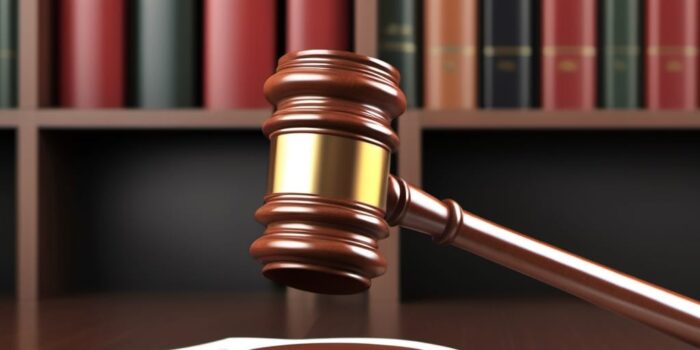In the realm of law, the term ‘Application’ holds a significant position. It is a formal request presented to a court, tribunal, or judicial body by a party seeking a specific order or judgment. The term ‘Application’ is used in various legal contexts, and its meaning can change depending on the circumstances. This article aims to provide a detailed and comprehensive understanding of the term ‘Application’ in legal parlance.
Applications are a fundamental part of the legal process. They are used to initiate proceedings, request specific actions, or seek remedies. Understanding the concept of ‘Application’ is crucial for anyone involved in legal proceedings, whether as a lawyer, a litigant, or a student of law. This article will delve into the intricacies of ‘Application’ in the legal context.
Types of Applications
In the legal world, there are several types of applications. These can be broadly categorized based on the nature of the request, the stage of proceedings during which they are filed, and the court or tribunal to which they are presented. Understanding these categories can help one appreciate the versatility and importance of applications in the legal process.
Applications can be interlocutory, originating, or final. Interlocutory applications are those made during the course of proceedings, often seeking interim relief or orders. Originating applications initiate a legal proceeding, while final applications seek a final judgment or order. Each type of application has its own rules and procedures, which vary across jurisdictions.
Interlocutory Applications
Interlocutory applications are often filed during ongoing proceedings. They are used to request interim relief or orders, such as injunctions, stay orders, or directions for the conduct of the case. These applications are crucial in ensuring the smooth progress of a case and protecting the rights and interests of the parties involved.
Interlocutory applications can be made by any party to the proceedings. They are typically filed in response to a specific event or circumstance that arises during the course of the case. For example, if a party believes that evidence may be destroyed or tampered with, they may file an interlocutory application seeking an order to preserve that evidence.
Originating Applications
Originating applications are those that initiate a legal proceeding. They are the first step in the legal process, setting out the applicant’s claim and the relief sought. Originating applications are typically accompanied by a statement of claim, which provides a detailed account of the facts and legal arguments supporting the application.
The rules and procedures for originating applications vary across jurisdictions and depend on the nature of the case. For instance, in some jurisdictions, an originating application must be served personally on the respondent, while in others, it may be served by mail or even published in a newspaper.
Final Applications
Final applications are those that seek a final judgment or order from the court. They are typically filed at the conclusion of proceedings, after all evidence has been presented and arguments made. Final applications summarize the case from the applicant’s perspective and set out the orders or judgment sought.
Final applications are crucial in shaping the outcome of a case. They provide the court with a clear and concise summary of the case, helping it to make a fair and just decision. The preparation of a final application requires a thorough understanding of the law and the facts of the case, as well as strong persuasive skills.
Procedure for Filing an Application
The procedure for filing an application in a court or tribunal varies depending on the jurisdiction, the nature of the case, and the type of application. However, there are some common steps that are generally followed. These include drafting the application, serving it on the other parties, and presenting it before the court or tribunal.
The first step in filing an application is to draft it. This involves setting out the orders or relief sought, the grounds for the application, and the facts and legal arguments supporting it. The application must be clear, concise, and persuasive. It should be supported by relevant evidence and legal authorities.
Drafting the Application
Drafting an application is a critical step in the legal process. It requires a thorough understanding of the law, the facts of the case, and the rules and procedures of the court or tribunal. The application must set out the orders or relief sought, the grounds for the application, and the facts and legal arguments supporting it.
The application should be clear, concise, and persuasive. It should be supported by relevant evidence and legal authorities. The application should also comply with the rules and procedures of the court or tribunal, including those relating to format, length, and service.
Serving the Application
Once the application has been drafted, it must be served on the other parties to the proceedings. Service ensures that all parties are aware of the application and have an opportunity to respond to it. The rules for service vary across jurisdictions and depend on the nature of the case and the type of application.
In some jurisdictions, applications must be served personally on the other parties. In others, they may be served by mail, fax, or email. Some jurisdictions also allow service by publication in a newspaper or official gazette. The applicant must ensure that the application is served in accordance with the rules and procedures of the court or tribunal.
Presenting the Application
After the application has been served, it must be presented before the court or tribunal. This involves submitting the application and any supporting documents to the court or tribunal, and making oral submissions in support of the application. The other parties will also have an opportunity to respond to the application and make their own submissions.
The court or tribunal will then consider the application, the responses, and the submissions of the parties. It may ask questions, seek further information, or request additional evidence. The court or tribunal will then make a decision on the application, which may be announced immediately or reserved for a later date.
Role of Applications in Legal Proceedings
Applications play a crucial role in legal proceedings. They are the means by which parties seek orders or relief from the court or tribunal. They are used to initiate proceedings, request specific actions, or seek remedies. Applications are an essential tool in the hands of a lawyer or litigant, allowing them to shape the course and outcome of a case.
Applications also serve a vital function in the administration of justice. They allow the court or tribunal to manage the proceedings, ensure the rights and interests of the parties are protected, and make fair and just decisions. Without applications, the legal process would be unstructured and chaotic, and the administration of justice would be compromised.
Initiating Proceedings
Applications are often used to initiate legal proceedings. An originating application sets out the applicant’s claim and the relief sought, and commences the legal process. It is the first step in a lawsuit or dispute, and sets the stage for the proceedings to follow.
By filing an originating application, a party can bring their dispute before a court or tribunal, seek a resolution, and enforce their rights. The originating application defines the scope of the dispute, identifies the issues to be resolved, and sets the agenda for the proceedings.
Requesting Specific Actions
Applications are also used to request specific actions from the court or tribunal. These can include interim orders, directions for the conduct of the case, or specific remedies. Such applications allow a party to shape the course of the proceedings, protect their rights and interests, and ensure a fair and just process.
For example, a party may file an application seeking an injunction to prevent the other party from taking certain actions, or a direction for the other party to produce certain documents. Such applications can have a significant impact on the proceedings and the ultimate outcome of the case.
Seeking Remedies
Finally, applications are used to seek remedies from the court or tribunal. These can include damages, injunctions, declarations, or specific performance. Applications for remedies are typically filed at the conclusion of proceedings, after all evidence has been presented and arguments made.
Applications for remedies allow a party to seek redress for a wrong, enforce their rights, or obtain a specific outcome. They are a crucial tool in the hands of a lawyer or litigant, and play a vital role in the administration of justice.
Conclusion
In conclusion, the term ‘Application’ in the legal context refers to a formal request presented to a court, tribunal, or judicial body by a party seeking a specific order or judgment. Applications are a fundamental part of the legal process, and understanding their nature, types, and role is crucial for anyone involved in legal proceedings.
Applications are versatile and powerful tools in the hands of a lawyer or litigant. They allow a party to initiate proceedings, request specific actions, seek remedies, and shape the course and outcome of a case. They also serve a vital function in the administration of justice, helping to ensure a fair and just process.
Start Your Legal Journey with Clear Legal
Understanding the intricacies of legal applications is just the beginning. At Clear Legal, we embody the principles of ethics, innovation, and quality to guide you through the legal landscape. Our commitment to these values ensures that we provide exceptional service to our clients and partners. If you’re seeking a legal team that upholds the highest standards while pushing the boundaries of what’s possible, look no further. Request a free consultation today and experience the Clear Legal difference as we help you navigate your legal needs with confidence and expertise.





